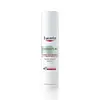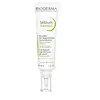What's inside
What's inside
 Key Ingredients
Key Ingredients

 Benefits
Benefits

 Concerns
Concerns

 Ingredients Side-by-side
Ingredients Side-by-side

Water
Skin ConditioningAlcohol Denat.
AntimicrobialGlycerin
HumectantTapioca Starch
Carbomer
Emulsion StabilisingSalicylic Acid
MaskingIsobutylamido Thiazolyl Resorcinol
BleachingDecylene Glycol
Skin ConditioningGlycyrrhiza Inflata Root Extract
Skin ConditioningPanthenol
Skin ConditioningGlucosylrutin
AntioxidantIsoquercitrin
AntioxidantAmmonium Acryloyldimethyltaurate/Vp Copolymer
Pantolactone
HumectantSodium Hydroxide
BufferingTrisodium EDTA
Citric Acid
BufferingParfum
MaskingWater, Alcohol Denat., Glycerin, Tapioca Starch, Carbomer, Salicylic Acid, Isobutylamido Thiazolyl Resorcinol, Decylene Glycol, Glycyrrhiza Inflata Root Extract, Panthenol, Glucosylrutin, Isoquercitrin, Ammonium Acryloyldimethyltaurate/Vp Copolymer, Pantolactone, Sodium Hydroxide, Trisodium EDTA, Citric Acid, Parfum
Water
Skin ConditioningDi-C12-13 Alkyl Malate
EmollientPropanediol
SolventPropylheptyl Caprylate
EmollientGlycerin
HumectantSalicylic Acid
MaskingSodium Polyacryloyldimethyl Taurate
Emulsion StabilisingArachidyl Alcohol
EmollientDimethicone
EmollientCetearyl Alcohol
EmollientBehenyl Alcohol
EmollientCoco-Glucoside
CleansingArachidyl Glucoside
EmulsifyingSodium Hydroxide
BufferingSodium Citrate
BufferingChondrus Crispus Extract
Skin ConditioningMannitol
HumectantPropyl Gallate
AntioxidantXylitol
HumectantRhamnose
HumectantSodium Metabisulfite
AntioxidantTocopherol
AntioxidantParfum
MaskingWater, Di-C12-13 Alkyl Malate, Propanediol, Propylheptyl Caprylate, Glycerin, Salicylic Acid, Sodium Polyacryloyldimethyl Taurate, Arachidyl Alcohol, Dimethicone, Cetearyl Alcohol, Behenyl Alcohol, Coco-Glucoside, Arachidyl Glucoside, Sodium Hydroxide, Sodium Citrate, Chondrus Crispus Extract, Mannitol, Propyl Gallate, Xylitol, Rhamnose, Sodium Metabisulfite, Tocopherol, Parfum
 Reviews
Reviews

Ingredients Explained
These ingredients are found in both products.
Ingredients higher up in an ingredient list are typically present in a larger amount.
Glycerin is already naturally found in your skin. It helps moisturize and protect your skin.
A study from 2016 found glycerin to be more effective as a humectant than AHAs and hyaluronic acid.
As a humectant, it helps the skin stay hydrated by pulling moisture to your skin. The low molecular weight of glycerin allows it to pull moisture into the deeper layers of your skin.
Hydrated skin improves your skin barrier; Your skin barrier helps protect against irritants and bacteria.
Glycerin has also been found to have antimicrobial and antiviral properties. Due to these properties, glycerin is often used in wound and burn treatments.
In cosmetics, glycerin is usually derived from plants such as soybean or palm. However, it can also be sourced from animals, such as tallow or animal fat.
This ingredient is organic, colorless, odorless, and non-toxic.
Glycerin is the name for this ingredient in American English. British English uses Glycerol/Glycerine.
Learn more about GlycerinParfum is a catch-all term for an ingredient or more that is used to give a scent to products.
Also called "fragrance", this ingredient can be a blend of hundreds of chemicals or plant oils. This means every product with "fragrance" or "parfum" in the ingredients list is a different mixture.
For instance, Habanolide is a proprietary trade name for a specific aroma chemical. When used as a fragrance ingredient in cosmetics, most aroma chemicals fall under the broad labeling category of “FRAGRANCE” or “PARFUM” according to EU and US regulations.
The term 'parfum' or 'fragrance' is not regulated in many countries. In many cases, it is up to the brand to define this term.
For instance, many brands choose to label themselves as "fragrance-free" because they are not using synthetic fragrances. However, their products may still contain ingredients such as essential oils that are considered a fragrance by INCI standards.
One example is Calendula flower extract. Calendula is an essential oil that still imparts a scent or 'fragrance'.
Depending on the blend, the ingredients in the mixture can cause allergies and sensitivities on the skin. Some ingredients that are known EU allergens include linalool and citronellol.
Parfum can also be used to mask or cover an unpleasant scent.
The bottom line is: not all fragrances/parfum/ingredients are created equally. If you are worried about fragrances, we recommend taking a closer look at an ingredient. And of course, we always recommend speaking with a professional.
Learn more about ParfumSalicylic Acid (also known as beta hydroxy acid or BHA) is a well-known ingredient for treating skin that struggles with acne and clogged pores. It exfoliates both the skin's surface and deep within the pores to help clear out buildup, control oil, and reduce inflammation.
Unlike AHAs (alpha hydroxy acids), salicylic acid is oil-soluble. This allows it to penetrate into pores which makes it especially effective for treating blackheads and preventing future breakouts.
Salicylic acid is also known for its soothing properties. It has a similar structure to aspirin and can calm inflamed or irritated skin, making it a good option for acne-prone skin that is also sensitive.
Concentrations of 0.5-2% are recognized by the U.S. FDA as an over-the-counter topical acne product.
It can cause irritation and/or dryness if one's skin already has a compromised moisture barrier, so it's best to focus on repairing that before introducing this ingredient into your routine.
While salicylic acid does not increase sun sensitivity, it’s still important to wear sunscreen daily to protect your skin.
If you are looking for the ingredient called BHA or Butylated Hydroxyanisole, click here.
Learn more about Salicylic AcidSodium Hydroxide is also known as lye or caustic soda. It is used to adjust the pH of products; many ingredients require a specific pH to be effective.
In small amounts, sodium hydroxide is considered safe to use. However, large amounts may cause chemical burns due to its high alkaline.
Your skin has a natural pH and acid mantle. This acid mantle helps prevent harmful bacteria from breaking through. The acid mantle also helps keep your skin hydrated.
"Alkaline" refers to a high pH level. A low pH level would be considered acidic.
Learn more about Sodium HydroxideWater. It's the most common cosmetic ingredient of all. You'll usually see it at the top of ingredient lists, meaning that it makes up the largest part of the product.
So why is it so popular? Water most often acts as a solvent - this means that it helps dissolve other ingredients into the formulation.
You'll also recognize water as that liquid we all need to stay alive. If you see this, drink a glass of water. Stay hydrated!
Learn more about Water